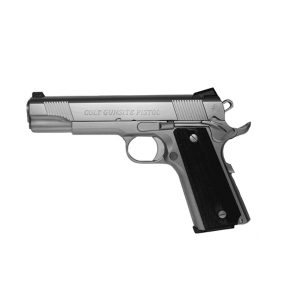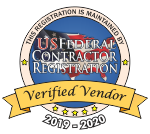
Let’s start with what we are trying to accomplish. Remember that Gunsite is a fighting school. We are training to use a handgun for personal protection in a deadly force confrontation. Our skills may help or not in competition, but that is not our goal. We shoot at rather far distances in our advanced classes, but the reason for this is not so much to practice fighting with a handgun at great distance but rather to hone our marksmanship skills at a distance that even small mistakes make a difference. The point being that extreme accuracy is not nearly as important as absolute reliability. Most factory guns shoot accurately enough out of the box to meet our needs, but are they reliable enough?
For reliability in a 1911 style pistol I recommend that the extractors be tuned. It seems that this is one of the most overlooked parts in this pistol. This needs to be done by an experienced gunsmith. Feed ramps and throats need to be checked but this is not as big a problem as many believe. Grip safeties need to be tuned so that they do not interfere with the trigger (even if not gripped perfectly). Again this should be done by an experienced gunsmith as there is a fine line between enough and too much. Trigger bows and rails need to be checked for burrs and other obstructions that may cause the trigger to not reset. Over travel screws need to be locked in place to prevent them from moving and causing the trigger to not move all the way to the rear. Springs need to be checked for the appropriate tension. Slide releases should be checked to make sure they do not drift out and lock up the slide. Plunger tubes need to be regularly checked to make sure the stake is intact. Sights need to be inspected to ensure they are not loose and moving around. On a simpler note, grip stock screws need to be checked regularly to ensure they do not move around.
Personal modifications for comfort can include either slim or standard size grip stocks. Standard extended safeties fit the bill for most, but those with small hands may consider lowered manual safeties. Triggers long or short will be decided by hand size. A beavertail grip safety should be considered a must for a fighting 1911. There may be a few out there who do not feel this way, but to get the proper high grip this is the best way to go. For those who shoot left handed an ambidextrous manual safety is a good idea, but I do not really recommend it for right hand shooters as it has a tendency to get knocked off in the concealed type holsters when worn right handed. Lefties, sorry about that, you don’t have much choice other than ambidextrous. On the flip side lefties, that magazine release being activated with the trigger finger ensures that your finger is not on the trigger while doing mag changes and also negates the need to shift grip. A slightly lighter magazine release spring is often helpful to right or left handers, just make sure it still retains the magazine while firing. Very importantly a good set of sturdy sights that can be seen, are not too sharp and are not fragile. I discourage adjustable sights for this fighting gun because they are more fragile and are just not necessary. I also discourage fiber optic sights for these fighting guns. They are very visible and easy to see, but they are also fragile and tend to come apart. Even when the fiber is gone the body tends to be fragile. Of course a good trigger job is helpful. What we are looking for here is a good crisp break at about 3 3/4 – 4 lbs. Remember that we are talking about a fighting pistol so we don’t need or want a super light trigger that we might touch off before we are ready. Here we go again. IT MUST BE RELIABLE. Full engagement of hammer/sear to ensure that the hammer does not follow.
Other modifications that I do not recommend are extended guide rods. They provide little if any benefit but make field disassembly more difficult. Shok buffs again provide little to no benefit but rob the slide of approximately 3/32 of rearward movement and when they come apart, they can interfere with cycling. Extended mag wells do little to speed up the reload but introduce the problem of not getting that magazine seated all the way. They also add length which of course is a bad thing in a concealed carry pistol. Extended mag releases also tend to inadvertently be pressed when carrying close to the body.
Well there are thousands of choices when it comes to modifying the 1911 but these are the most common. If you disagree with my recommendations, good for you, they are just recommendations. If you have any questions concerning this post or about something not covered please feel free to send me an email and I will be glad to discuss it with you.
tacdrivers@gunsite.com
Thanks for reading, look for the Gunsmith Corner again next month,
Mike



Leave a Reply
You must be logged in to post a comment.